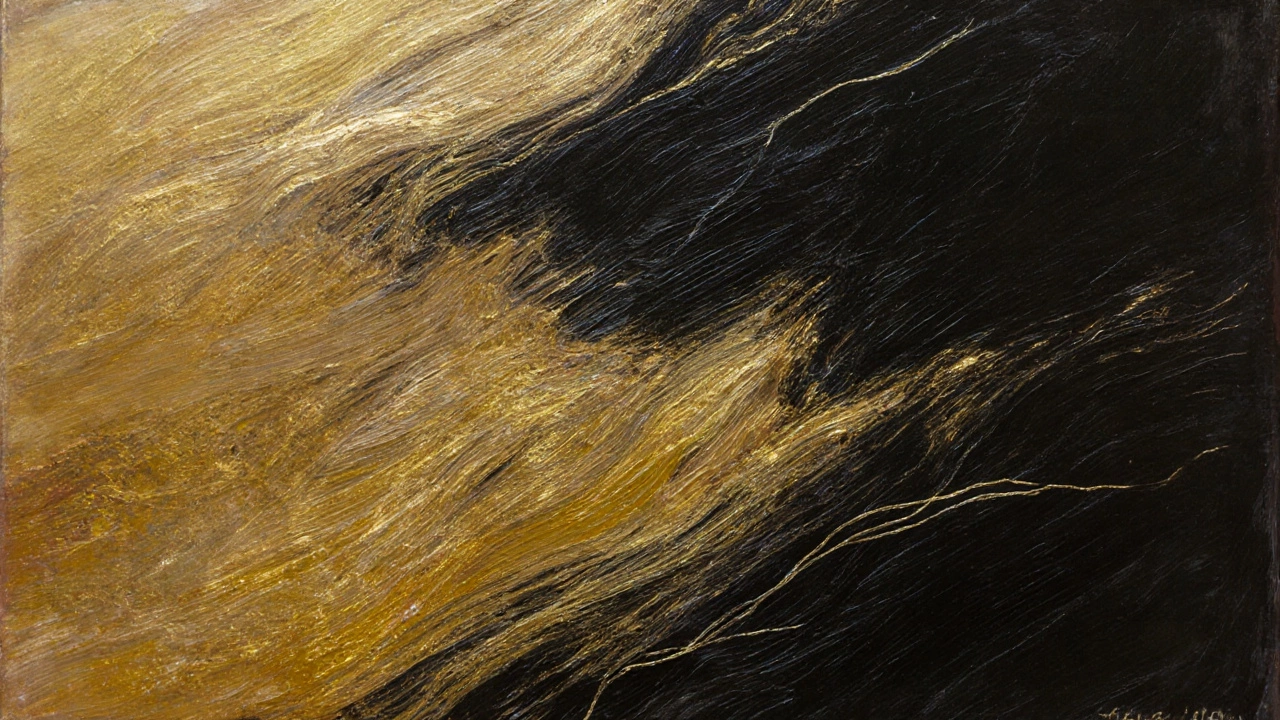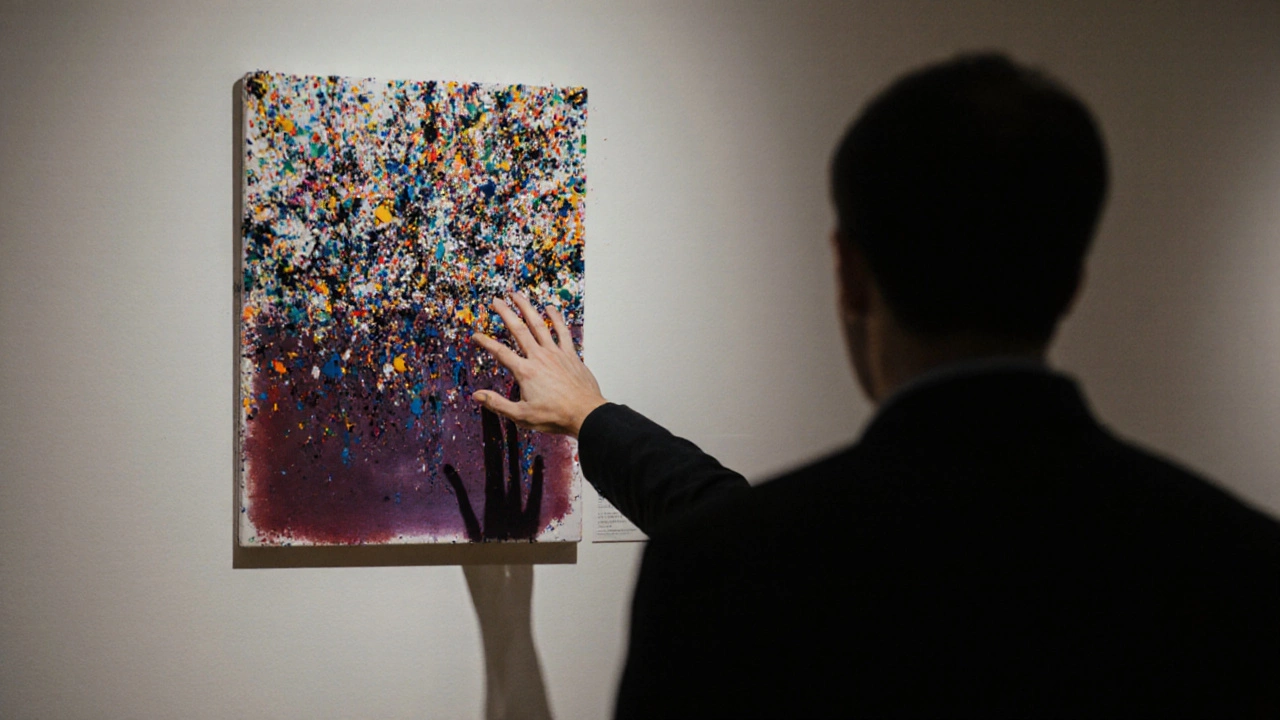Abstract Art Personality Quiz
What Does Your Color Choice Reveal?
Discover your personality traits through color psychology. Based on studies, your emotional response to abstract art often mirrors your inner state.
When you stand in front of an abstract painting-swirls of crimson, jagged lines of charcoal, smears of gold over deep black-what do you feel? Not what you think you’re supposed to feel, but what actually rises up in you? That gut reaction? That’s not random. It’s a mirror.
Abstract Art Doesn’t Show You Objects. It Shows You Emotions.
Unlike a portrait or a landscape, abstract art doesn’t tell you what to see. There’s no tree, no face, no house. Instead, it gives you texture, movement, tension, calm. And your brain doesn’t just observe it. It translates. A 2021 study from the University of London found that people consistently matched abstract artworks with emotional states like anxiety, joy, or serenity-even when they had no art training. The more intense the color clash, the more likely viewers felt inner conflict. The softer the gradients, the more they reported peace.
That’s not coincidence. Abstract art bypasses logic. It speaks directly to your nervous system. A painting with thick, heavy brushstrokes might feel like pressure on your chest. One with thin, floating lines might feel like breathing. Your response isn’t about the artist’s intent. It’s about what’s already inside you.
Color Choices Reveal Your Inner State
People drawn to bold reds and blacks often report feeling passionate, intense, or even restless. Those who linger in front of paintings with soft blues and grays tend to describe themselves as calm, reflective, or emotionally reserved. This isn’t just pop psychology. Research from the Color Psychology Institute shows that individuals who consistently choose abstract art with cool tones score higher on measures of introversion and emotional regulation.
But here’s the twist: people who say they ‘don’t get’ abstract art? Often, they’re the ones avoiding discomfort. If you walk away from a painting because it feels ‘chaotic’ or ‘ugly,’ you might be reacting to something inside you that feels uncontrolled. That’s not a flaw. It’s a signal.
What Your Favorite Abstract Artist Says About You
Let’s say you’re drawn to Mark Rothko. His large, floating rectangles of color-deep maroons, burnt oranges, muted purples-don’t depict anything. But they pull you in. People who connect with Rothko often describe feeling a sense of stillness, even sadness, but in a comforting way. They’re usually introspective, value solitude, and have a deep emotional memory.
On the other hand, if you’re pulled toward Jackson Pollock’s wild drips and splatters, you might identify with spontaneity, energy, or a need to break free from structure. You’re not just admiring chaos-you’re recognizing a part of yourself that resists order.
And what about Hilma af Klint? Her swirling, spiritual forms feel like cosmic diagrams. People who feel connected to her work often describe themselves as curious about hidden patterns, drawn to metaphysics, or searching for meaning beyond the visible.

Why You Might Hate an Abstract Piece (And What That Means)
Not every abstract painting will speak to you. And that’s okay. But if you feel annoyed, confused, or even angry at a piece, ask yourself: what’s really bothering you?
Is it the lack of control? The absence of a clear story? That discomfort might point to a need for predictability in your life. Maybe you’re in a phase where everything feels uncertain-your job, a relationship, your direction-and the painting reflects that chaos back at you. Instead of rejecting it, you could see it as an invitation: What part of your life needs space to be messy?
There’s no right or wrong reaction. But ignoring your reaction? That’s where the real insight gets lost.
Abstract Art Is a Mirror, Not a Message
Art critics and historians might spend hours debating technique, historical context, or the artist’s biography. But for you? None of that matters. What matters is how the painting lands in your body.
That painting that makes your chest tighten? Maybe you’ve been holding your breath for months. That one that makes you smile without knowing why? Maybe you’ve forgotten how to feel joy without a reason.
Abstract art doesn’t explain you. It doesn’t diagnose you. It simply reflects what’s already there-waiting to be noticed.

How to Use Abstract Art to Understand Yourself
Here’s how to turn gallery visits or scrolling through art online into a self-reflection tool:
- Don’t read the title or artist name first. Look at the piece for 60 seconds without thinking.
- Notice where your eyes go first. What part pulls you in? What part do you avoid?
- Ask yourself: What emotion does this feel like? Not ‘what does it mean?’ but ‘what does it feel like in my body?’
- Write down the word that comes up: ‘weight,’ ‘freedom,’ ‘noise,’ ‘silence,’ ‘hope,’ ‘doubt.’
- Compare that word to what’s happening in your life right now.
You don’t need to be an artist. You don’t need to understand ‘modern art.’ You just need to be honest with yourself.
It’s Not About Taste. It’s About Truth.
People say, ‘I don’t like abstract art.’ But what they really mean is, ‘I don’t like what it makes me feel.’
That’s not a judgment on the art. It’s a clue about you.
Abstract art asks one simple question: What are you not saying to yourself?
The answer is always there-in the colors, the lines, the silence between the strokes. You just have to be still long enough to hear it.
Can abstract art really tell me something about my personality?
Yes. While abstract art doesn’t have a fixed meaning, your emotional response to it often mirrors your inner state. Studies show people consistently associate certain colors, textures, and compositions with emotions like anxiety, calm, or excitement-regardless of art training. Your reaction is a reflection of your subconscious, not the artist’s intent.
Why do some abstract paintings make me feel uncomfortable?
Discomfort often comes from the art reflecting something you’re avoiding-chaos you can’t control, emotions you’ve suppressed, or uncertainty in your life. Instead of dismissing the feeling, ask yourself: what part of my life feels unresolved or out of balance? The painting isn’t attacking you-it’s holding up a mirror.
Do I need to know art history to understand abstract art?
No. Art history helps you appreciate context, but it doesn’t change how you feel. Abstract art works on a sensory and emotional level. You don’t need to know who painted it or when. Just notice what happens inside you when you look at it. That’s where the real insight begins.
Why do I keep being drawn to certain colors in abstract art?
Color has a direct impact on your nervous system. Reds and oranges often trigger energy or tension; blues and greens evoke calm or melancholy. If you’re repeatedly attracted to a specific palette, it may reflect your current emotional needs-like wanting more peace, or needing to release pent-up emotion. Pay attention to what you’re drawn to-it’s a quiet signal from your inner self.
Is it normal to not like abstract art at all?
Yes. But ask yourself why. Do you dislike it because it feels meaningless? Or because it makes you feel something you don’t want to face? Many people reject abstract art because it doesn’t offer clear answers-and that’s exactly what makes it powerful. It doesn’t have to be your favorite. But if you avoid it entirely, you might be avoiding the parts of yourself that don’t fit neatly into a story.
Next Steps: Start Your Own Abstract Art Journal
Grab a notebook. Every week, pick one abstract piece-online, in a magazine, or at a gallery. Don’t read anything about it. Just sit with it for five minutes. Write down:
- The first emotion that comes up
- Where you felt it in your body
- What it reminded you of in your life
After a month, look back. You’ll start to see patterns. A color you keep returning to. A feeling that keeps showing up. That’s not art. That’s you.

